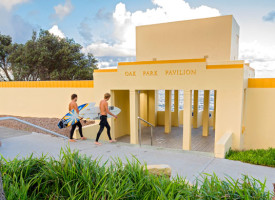As is often the case, those with ‘financial flexibility’ will be best placed to meet their cost of care in the most effective way. People who have a house as well as significant assets outside their home will have the choice of keeping the house (and potentially renting it out) and utilising their savings to meet their costs.
Structuring assets in this way can enable the person to receive a ‘double exemption’ on their assets for pension purposes, as the house is an exempt asset (for two years) and the refundable accommodation bond is also an exempt asset.
The exemption on the family home (and any rent received) can be extended for an indefinite period where the resident pays at least some of their accommodation payment by DAP while renting the house.
From an aged care point of view, the family home has a capped value of $154,179 unless a protected person lives there. Investments contribute to the means tested fee under both the asset and income tests. Moving investments to a RAD would still have them assessed as an asset but would exempt them from the income test.
by Rachel Lane
http://cuffelinks.com.au/financial-flexibility-key-meeting-aged-care-costs/



